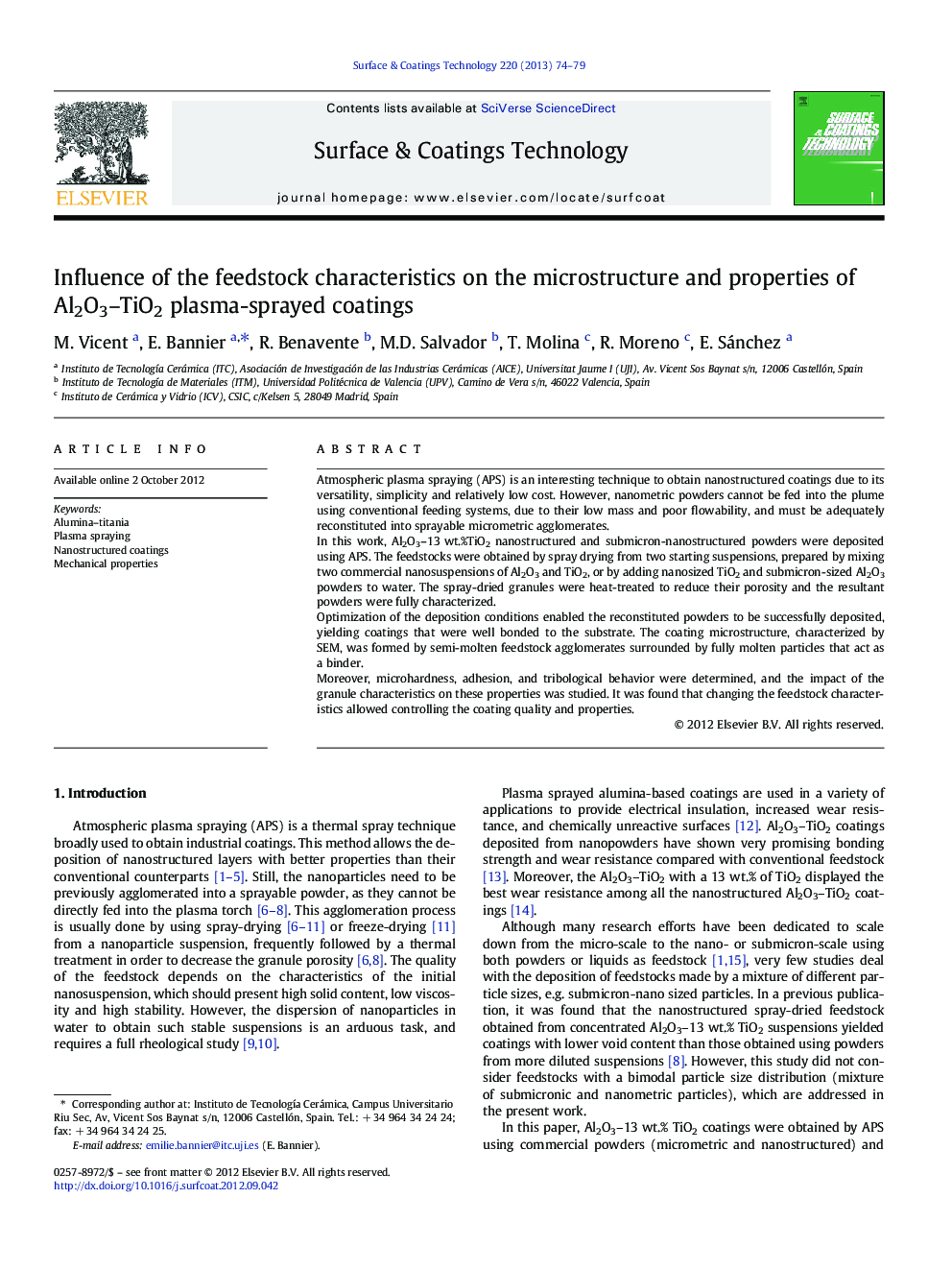| Article ID | Journal | Published Year | Pages | File Type |
|---|---|---|---|---|
| 1658097 | Surface and Coatings Technology | 2013 | 6 Pages |
Atmospheric plasma spraying (APS) is an interesting technique to obtain nanostructured coatings due to its versatility, simplicity and relatively low cost. However, nanometric powders cannot be fed into the plume using conventional feeding systems, due to their low mass and poor flowability, and must be adequately reconstituted into sprayable micrometric agglomerates.In this work, Al2O3–13 wt.%TiO2 nanostructured and submicron-nanostructured powders were deposited using APS. The feedstocks were obtained by spray drying from two starting suspensions, prepared by mixing two commercial nanosuspensions of Al2O3 and TiO2, or by adding nanosized TiO2 and submicron-sized Al2O3 powders to water. The spray-dried granules were heat-treated to reduce their porosity and the resultant powders were fully characterized.Optimization of the deposition conditions enabled the reconstituted powders to be successfully deposited, yielding coatings that were well bonded to the substrate. The coating microstructure, characterized by SEM, was formed by semi-molten feedstock agglomerates surrounded by fully molten particles that act as a binder.Moreover, microhardness, adhesion, and tribological behavior were determined, and the impact of the granule characteristics on these properties was studied. It was found that changing the feedstock characteristics allowed controlling the coating quality and properties.
► Al2O3–TiO2 coatings were deposited by APS from 4 different feedstocks. ► 2 powders were spray-dried from suspensions of nano- or submicron-sized particles. ► The microstructure is made of partially molten areas embedded in a molten matrix. ► The submicron–nanometric reconstituted powder leads to the best properties.
